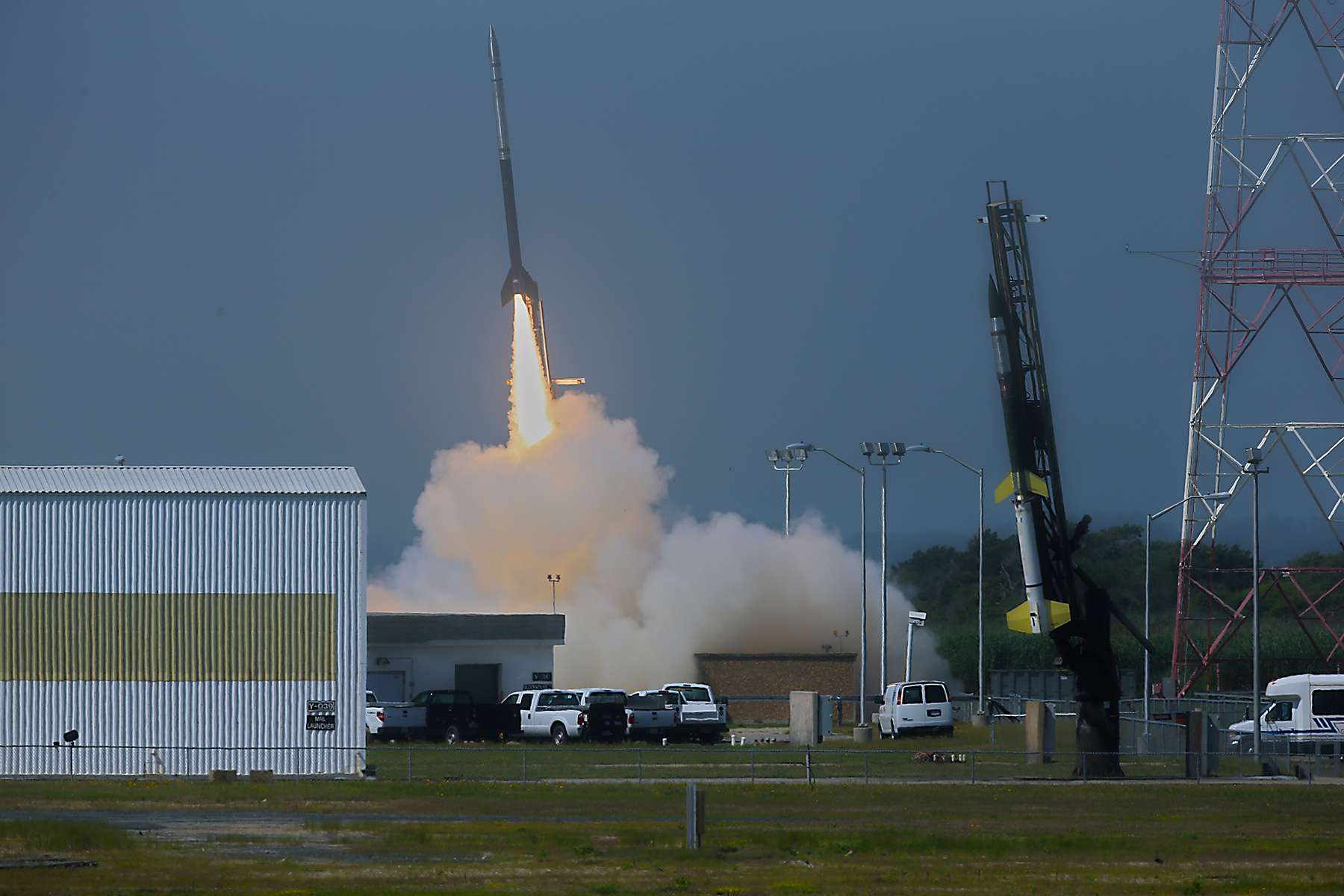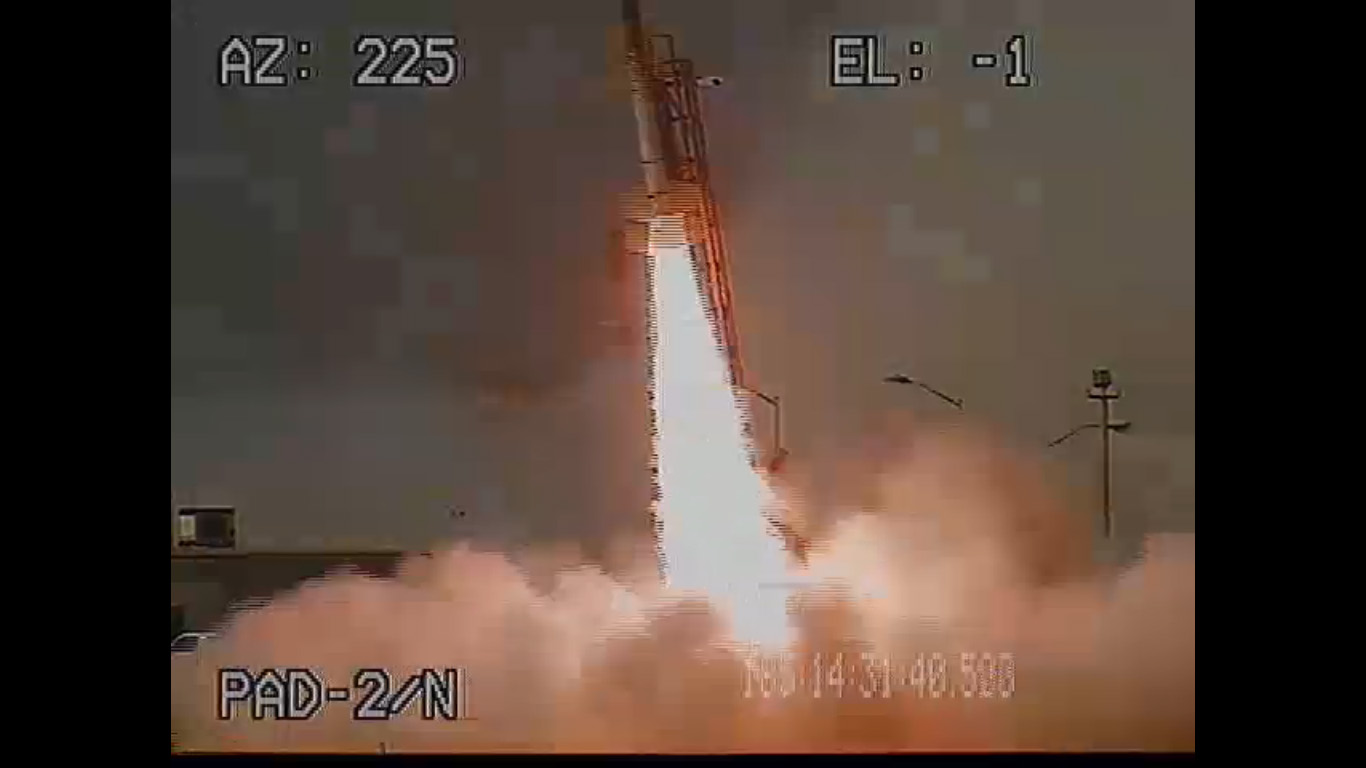Rockets' Red Glare! NASA Marks Fourth of July with Double Launch

NASA launched two small rockets from Virgina's Eastern Shore today in an early Fourth of July fireworks display aimed to probe the electrical eddies of the Earth's upper atmosphere.
The two small rockets blasted off within 15 seconds of each other from NASA's Wallops Flight Facility on Wallops Island, Va. The mission: to probe the global electrical current in the winds of Earth's ionosphere with instruments mounted to a Black Brant V booster and a Terrier-Improved Orion sounding rocket.
"We have liftoff of the Black Brant V & Terrier-Improved Orion, for an Independence Day fireworks show," NASA Wallops officials wrote in a Twitter post marking launch success.
The Black Brant V rocket launched at 10:31:25 a.m. EDT (1431:25 GMT), with the Terrior-Improved Orion rocket following at 10:31:40 a.m. EDT (1431:40 GMT).
NASA's Fourth of July rocket launches were part of the Daytime Dynamo mission, a joint project with the Japan Aerospace Exploration Agency to study how electrical currents move in Earth's ionosphere between 30 and 600 miles (48 and 965 kilometers) above the surface. People on Earth rely on this current in the ionosphere, called the dynamo, every day.
Radio signals are bounced off the ionosphere during broadcasts and satellite communication and navigation signals must travel through the ionosphere in order to reach the Earth. Then the ionosphere is disturbed, these signals can be distorted, NASA officials said.
The larger Black Brant V rocket carried instruments to measure the neutral and charged particles in Earth's ionosphere, while the smaller Terrier-Improved Orion released a lithium gas compound designed to allow scientists on the ground track the electrical current wind patterns. The two rockets were expected to reach an altitude of about 100 miles (160 kilometers), but not fly high and fast enough to orbit the Earth.
Breaking space news, the latest updates on rocket launches, skywatching events and more!
The rocket launch came after days of delays due to unfavorable weather at the Wallops launch range. Cloudy weather and high winds prevented several launch attempts, which began June 24. It was only by coincidence that the rocket launch coincided with the annual U.S. Independence Day holiday.
"Happy Fourth of July everyone," a launch controller told the mission team shortly after liftoff. "We beat everyone by putting some rockets into the air."
Email Tariq Malik at tmalik@space.com or follow him @tariqjmalik and Google+. Follow us @Spacedotcom, Facebook and Google+. Original article on SPACE.com.

Tariq is the award-winning Editor-in-Chief of Space.com and joined the team in 2001. He covers human spaceflight, as well as skywatching and entertainment. He became Space.com's Editor-in-Chief in 2019. Before joining Space.com, Tariq was a staff reporter for The Los Angeles Times covering education and city beats in La Habra, Fullerton and Huntington Beach. He's a recipient of the 2022 Harry Kolcum Award for excellence in space reporting and the 2025 Space Pioneer Award from the National Space Society. He is an Eagle Scout and Space Camp alum with journalism degrees from the USC and NYU. You can find Tariq at Space.com and as the co-host to the This Week In Space podcast on the TWiT network. To see his latest project, you can follow Tariq on Twitter @tariqjmalik.



